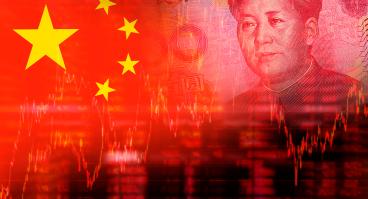Bargaining With China: Exchange Rate Policy

Table of Contents
Author(s)
Russell Green
Former FellowShare this Publication
- Download PDF
- Print This Publication
- Cite This Publication Copy Citation
Green, Russell A. 2016. Bargaining with China: Exchange Rate Policy. Policy Brief: Recommendations for the New Administration. Rice University’s Baker Institute for Public Policy, Houston, Texas.
China follows many practices that tilt the playing field in its favor, which the U.S. should rightly seek to change. Exchange rate policy no longer belongs on the list. Rather, it is the U.S. approach to China’s exchange rate policy that lags reality. Offering to recognize China’s shifts in policy presents a valuable bargaining chip in negotiations with China on more pressing matters and can institutionalize China’s role as a custodian of global stability, a win-win arrangement.
China has actively prevented yuan depreciation for over two years, which promotes rebalancing globally and with the United States. China’s government aims to improve financial stability, for instance, in better communication strategies that calm markets. Chinese officials now regularly repeat that they have no intention of using exchange rate depreciation as a policy tool.
China could hardly change their exchange rate policy in a more favorable direction, so punishing China for currency manipulation could not possibly induce a better outcome. Countries that truly deserve scrutiny like Taiwan and sometimes Korea would see that adopting good behavior does not beget U.S. appreciation.
The shift in China’s exchange rate policy ties in with Chinese President Xi Jinping’s goal to achieve China’s potential as a global power and, more specifically, for the yuan to serve as a reserve currency. If the U.S. offers to support these goals, it can change the dynamic of cooperation in the area of global economic governance, which is a top priority for restoring a balanced trade relationship.
An even stronger offer would be to create a new G-7-style grouping that includes China. This should be a smaller high-table grouping of finance ministers and central banks focused on the international financial system. By including China, this arrangement would more effectively promote good global governance and also help institutionalize the shift in China’s exchange rate policy. China’s rising economic power necessitates its inclusion, and the G-7 structure has grown outdated in ways that extend beyond China’s absence.
This policy would represent a significant gesture by the U.S. to China, and therefore provide leverage on other issues. At the beginning of a new administration, this could usefully set a tone of cooperation. Where to apply that leverage may depend on evolving priorities.
Despite the perception that this proposal may represent a gift to China, in reality it gives very little. The rise of China as an economic power will eventually require from the U.S. all of the measures described in this brief. The question is only one of timing. The U.S. should accelerate the timing so that our policy shift looks magnanimous rather than grudging. By shifting now the U.S. does so on its own terms and gains more in return.
Background
China has made strong efforts to prevent a weaker yuan. China’s foreign exchange reserves have fallen by almost US$1 trillion since July 2014.1 Despite this, the yuan has depreciated almost 8% against the dollar over that period, 3% of which came across two days in August 2015. Depreciation despite massive intervention indicates a risk that this effort from China cannot last forever.
The value of this proposal depends on China continuing to strengthen. As Barry Eichengreen and Ben Bernanke have pointed out, by resisting exchange rate depreciation China faces some thorny policy choices.2 It has already put in place measures to limit capital outflows, but these may prove insufficient to stem reserve losses if U.S. monetary policy tightens further. Additional capital controls work against China’s larger goal of establishing the yuan as a global reserve currency, as well as hinder capital market development and damage its reputation for policy stability.
For now the yuan’s role in the global economy is growing rapidly. The currency’s share of global foreign exchange trading has grown to 4% from almost zero 10 years ago. It has gained enough usefulness as a reserve currency that the International Monetary Fund (IMF) now reports sovereign holdings of yuan assets among the six other major currency holdings. The global role of the currency should continue to trend upward in the absence of a major disruption.
China appears motivated to raise its stature in the international financial architecture. Establishing the yuan as a global reserve currency has helped motivate China’s recent efforts to resist depreciation. The process of obtaining IMF approval for the yuan to join other major currencies in the Special Drawing Rights basket appears to have facilitated several reforms. China loosened capital controls, reformed domestic capital markets, and made steps toward greater market determination of the yuan.3
The current set of groupings for high- level stewardship of the international financial system are inadequate for effective global governance. International financial stability requires a grouping of finance ministers and central banks that is small enough to be confidential and efficient enough that it may act quickly in a crisis. It must also include the leaders of all key global economies and financial centers.4
The G-7 is an artifact of an earlier age before the advent of the euro and before China’s rise. The G-20 has rightly taken the G-7’s place as the preeminent grouping for coordinating international policies at the leaders level. But for matters of international financial policy—to calm markets in times of crisis or to maintain discipline on the “rules of the game”—it is far too large and unwieldy.
A grouping with the U.S., Eurozone, Japan, China, and the UK would suffice to cover the essential markets and currencies. China is moving in the direction of a like-minded shepherd of the international financial system, and its inclusion would provide further momentum. The G-7 was essential to corralling Japan into a policy against depreciation of the yen after the election of Prime Minister Shinzo Abe in 2014, and its stance against competitive depreciation provided a platform that China adopted in the G-20. A new grouping could continue this helpful role more effectively and efficiently in the future.
Endnotes
1. A portion of the decline may derive from valuation changes as non-dollar reserves fell in dollar terms.
2. Eichengreen: http://bit.ly/2dlxxUf. Bernanke: http://brook.gs/2dmes0n.
3. See http://bit.ly/2db4y3h.
4. See, for instance, the analysis in Bergsten, C. Fred and Russell A. Green, Ed. International Monetary Cooperation: Lessons from the Plaza Accord After Thirty Years. Washington: The Peterson Institute for International Economics. 2016.
This material may be quoted or reproduced without prior permission, provided appropriate credit is given to the author and Rice University’s Baker Institute for Public Policy. The views expressed herein are those of the individual author(s), and do not necessarily represent the views of Rice University’s Baker Institute for Public Policy.


